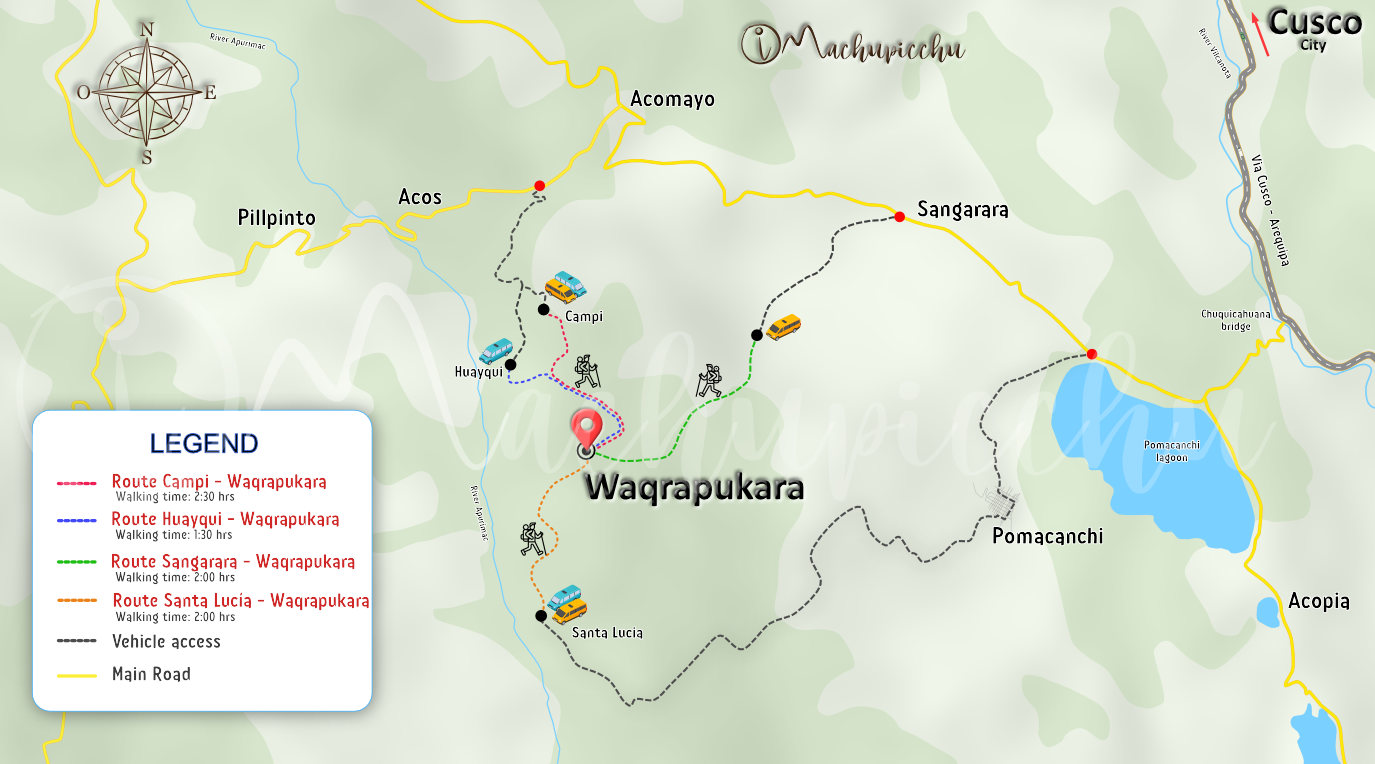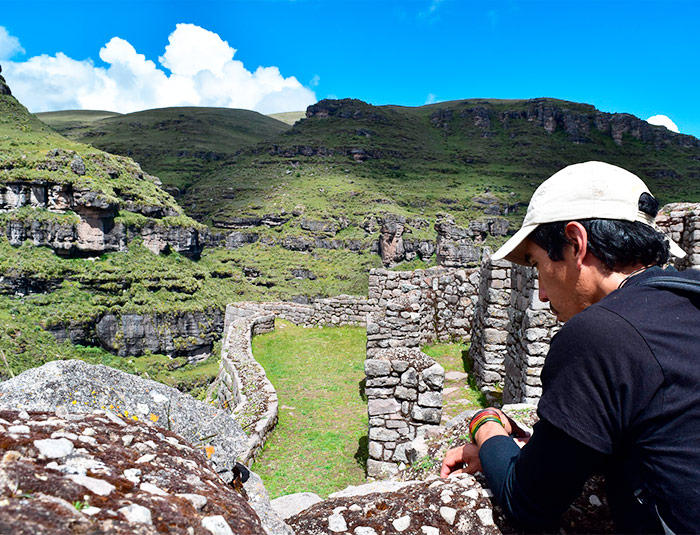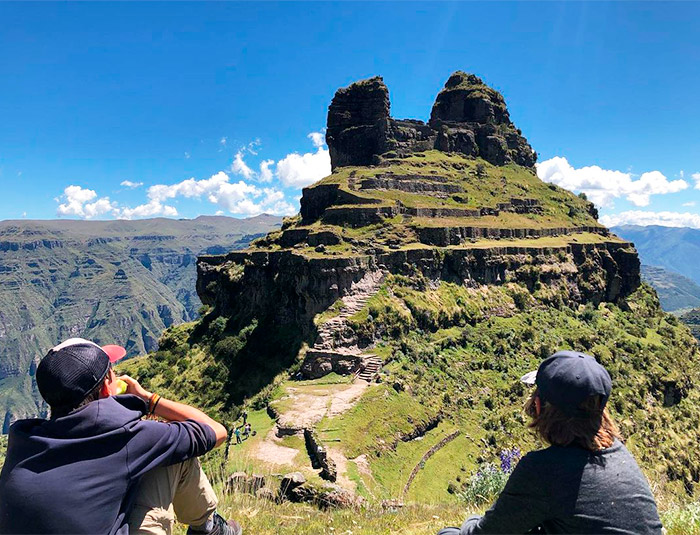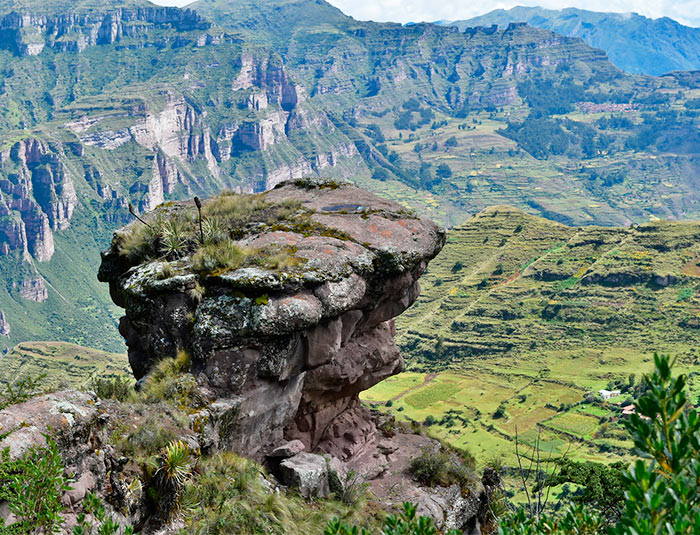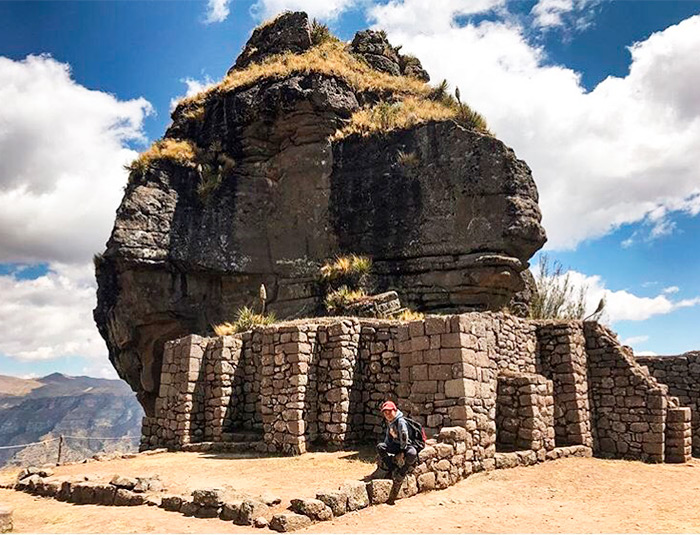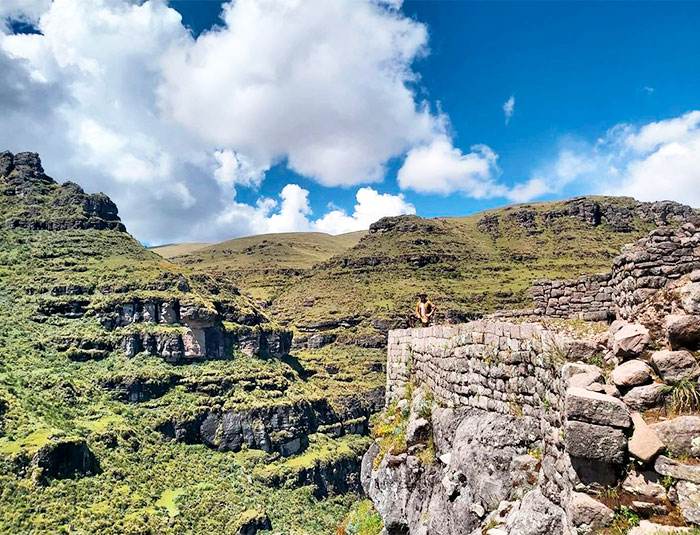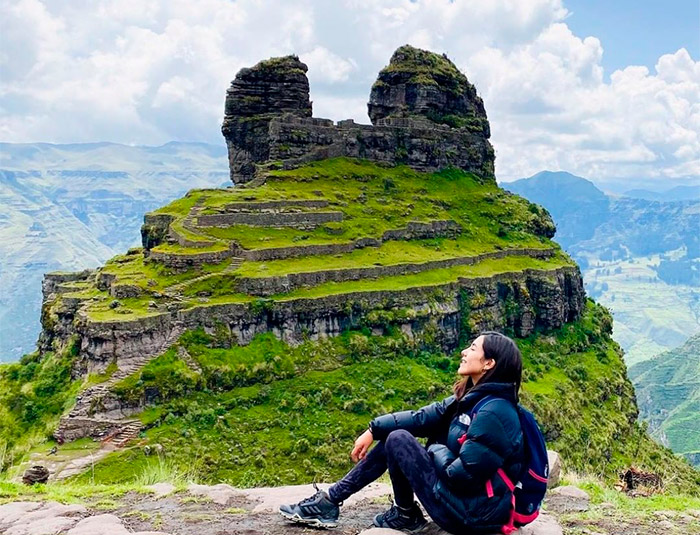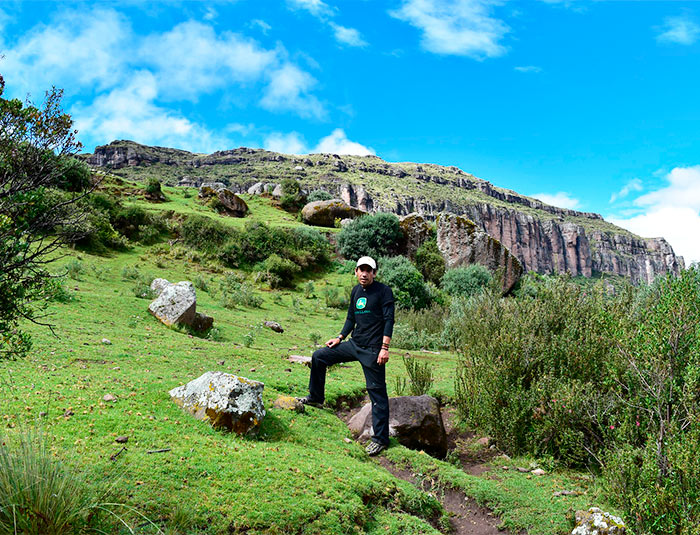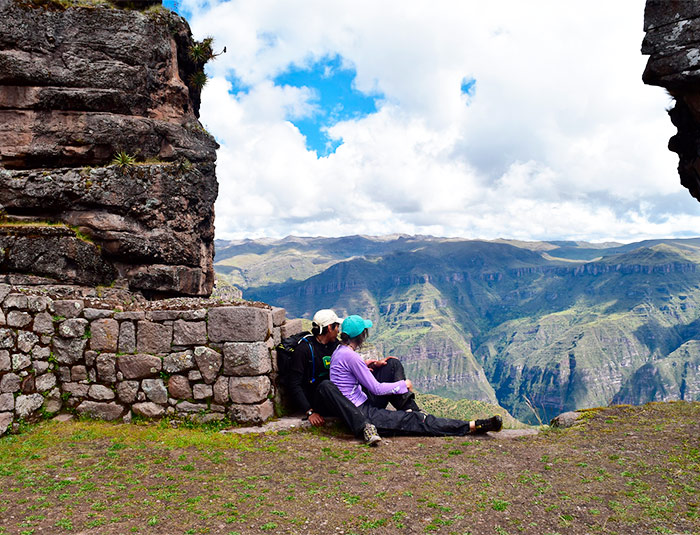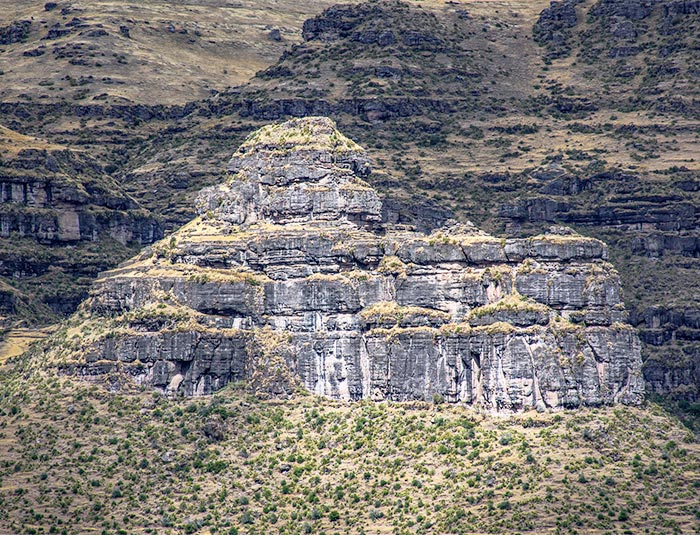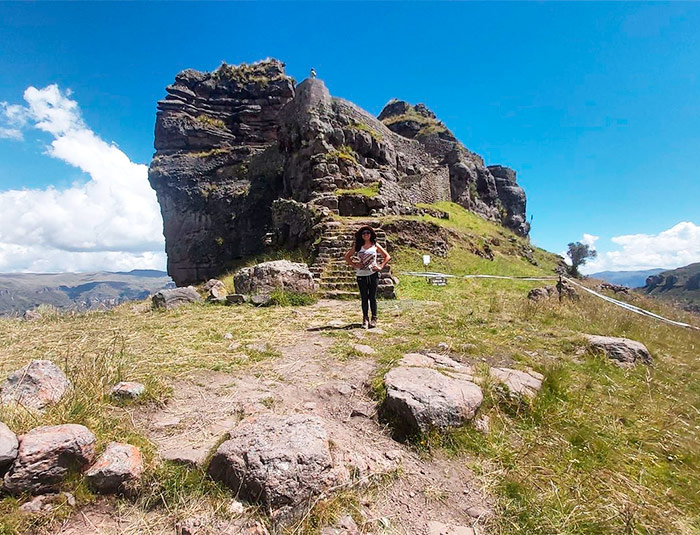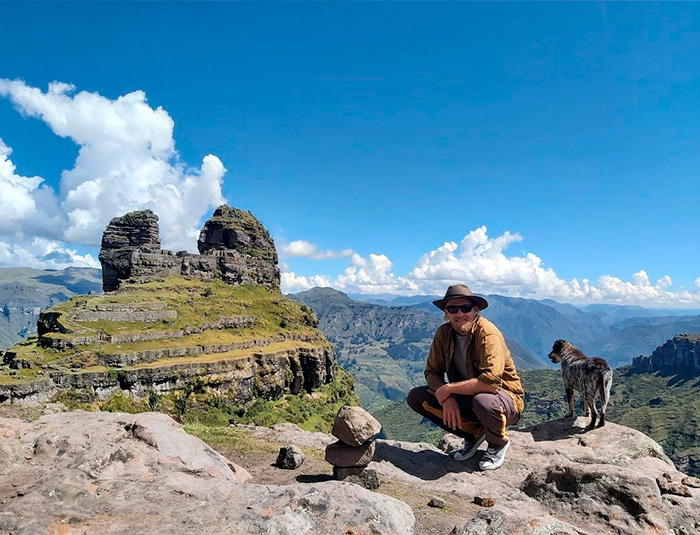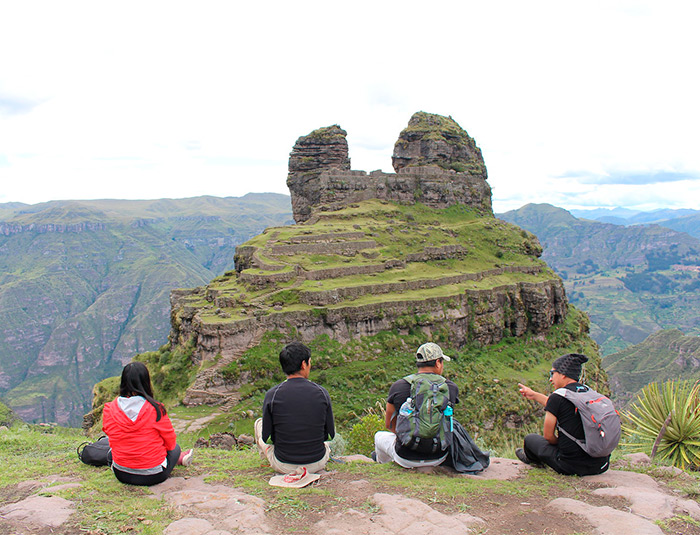Waqrapukara, the horn-shaped Inca fortress
The archaeological site of Waqrapukara has nothing to envy the other Inca complexes in Cusco. Its name comes from a Quechua word that means in Spanish: ‘Fortress in the shape of a horn’. The reason for this name is its immense summit with rocky mountain formations, as if they were two horns. The tour there offers history, walks, beautiful landscapes and all the ingredients for an unforgettable visit. Unfortunately, there are still few tourists who dare to visit Waqrapukara.
- The Inca fortress in the form of a horn
- Location
- Map. How to get?
- From the canchis to the incas
- Constructions and architecture
- Photos
- Tours to Waqrapukara
- Can I go on my own?
- More information
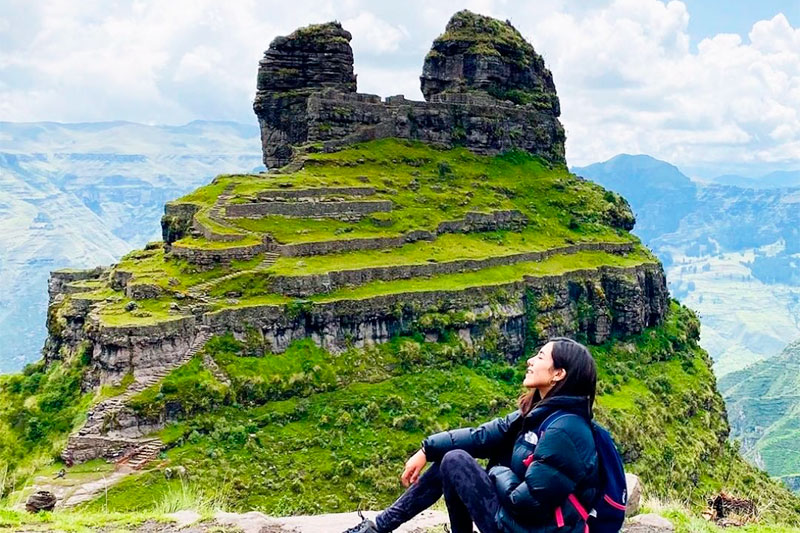
Inca fortress of Waqrapukara
The Inca fortress in the form of a horn
- Waqrapukara was a religious sanctuary. Its fine constructions made of granite stone demonstrate this. However, due to its rocky formation crowned by two huge horns, and its location at the top of this mountain, it is presumed that it must also have served as a fortress. Seen from afar, it resembles a formidable castle.
- The research and enhancement work was done not long ago. The most important, by the Cusco archaeologist Miguel Colque Enríquez, mention that the importance of Waqrapukara is still not entirely clear. Is that there are several sections of Inca roads to get there. In addition, on the way there are other Inca sites such as Tambopukara, Yactapukara and Ayapukara. This could show that it was a very important religious (pilgrimage) site.
- However, compared to other archaeological sites in Cusco, there are still not many visitors who dare to know Waqrapukara. If you dare to go, you will find an impressive site, with enclosures, temples, canals, platforms, stairways and more. In addition, you will have to take a walk full of beautiful landscapes. Most tourists go on tour although it is also possible to go on your own, or even camp next to Waqrapukara.
Location
- Waqrapukara is located in the province of Acomayo (south of the Cusco region). It belongs to the Acos district, 2 hours 30 minutes by car from the city of Cusco.
- Geographically, it is located on a mountain path at the foot of the Apurímac river canyon. Its altitude reaches 4,300 meters above sea level (about 14,107 feet, approximately).
Map. How to get?
There are three routes to get to Waqrapukara from the city of Cusco:
- Route through Sangarará – This route is preferred by tourists and tourism agencies. The trip by car departs from Cusco and ends in the town of Sangarará (trip of 2 hours 30 minutes). This is followed by a 15-kilometer hike (between 2 to 3 hours) to Waqrapukara. The way back is the same.
- Route through Huayqui – This route follows a preferred route by car to the rural community of Huayqui (trip of approximately 3 hours). From here a walk for approximately 7.5 kilometers begins. This walking route takes 1 hour 30 minutes.
- Route through Santa Lucía – This route also follows the southern route of Cusco until it reaches the peasant community of Santa Lucía (approximately 3 hours trip). From there, the 2-hour walk to Waqrapukara begins. Much of these routes follow Inca trails and ancient pre-Hispanic trails.
From the canchis to the incas
- Research indicates that Waqrapukara was initially built by the Canchi culture and not by the Incas. The canchis inhabited the southern territories of Cusco (current province of Canchis) in parallel with the Incas. Both cultures competed for territorial control.
- However, after the Inca war vs. Chancas (1440 AD), the Canchis allied with the Incas and formed part of the Collasuyo region, in the nascent Tahuantinsuyo empire.
- The construction date of Waqrapukara is still a mystery. The canchis had to build the first roads and enclosures in a few centuries before the formation of the Inca empire in 1438. It is estimated that under the government of Emperor Túpac Yupanqui (1471 – 1493) the main temples and platforms were built.
Oral tradition brought an Inca legend about Waqrapukara to this day. This legend tells that the Inca general called T’ito Qosñipa, had powerful armies in Canchis. The warrior rebelled against the Inca emperor Huayna Capac who cornered the rebel in Waqrapukara. Despite this, T’ito Qosñipa resisted due to the good location of the place. To subdue him, Huayna Cápac ordered to cut off his water supply. The rebel surrendered. As punishment he was mutilated in one of his ears.
Constructions and architecture
- A remarkable aspect of the architecture of Waqrapukara is its three-jamb temples located in the highest part (in the central part of the stone mounds that form the horns of the fortress). These types of buildings are present in few Inca sanctuaries of great importance such as Pachacamac (Lima) and Maukallacta (Arequipa).
- The central structure of Waqrapukara (in the middle of the two horns) is made up of a cavern with a window that shows the abyss on which it is formed.
- The entire architectural complex of Waqrapukara is made up of enclosures, stairs, channels, platforms and more. In the lower part are the platforms, smaller enclosures and stairs that lead to the highest part. There, in the upper part, are the largest enclosures, the finest temples and constructions (of the Inca elite).
Tours to Waqrapukara
- The 1-day tours to Waqrapukara have a cost that varies from 60 to 80 dollars. They include everything you need for the trip: complete transportation, lunch, entrance fee, tour guide and utensils for the walk. You can book a tour with the tourism agency of your choice.
- The 2-day Waqrapukara tours include one night of camping next to the Inca archaeological site. Prices range from $ 140 to $ 200 per person. Includes: complete transportation, food (breakfast, lunch and dinner), entrance fee, tour guide and utensils for the walk. Prices vary depending on the tourism agency you choose.
Can I go on my own?
- Waqrapukara is also a destination that can be visited on its own. To do this, you must take public transport to Cusipata (located on Huayruropata avenue in the city of Cusco). Once there you must take another public transport to the town of Sangarará. There the walk to the Inca archaeological site begins. The return trip takes the same return route.
More information
- From the top of Waqrapukara the winds are strong. The daytime temperature can reach 23ºC. while at night the cold can drop to 0ºC. During the visit, it is best to wear a windbreaker jacket, comfortable pants and shoes, as well as a poncho in case of rain.
- The walk that leads to Waqrapukara follows ancient routes built by the Incas (the famous qhapac ñan or network of Inca roads). Some researchers suggest that the route there was a pilgrimage. There are still many mysteries to unravel in Waqrapukara.
- The best time to visit Waqrapukara is during the low rainfall months (May through October). The rest of the year, especially January, February and March, the constant rains can prevent a comfortable walk there.
By Ticket Machu Picchu – Last updated, August 15, 2024
